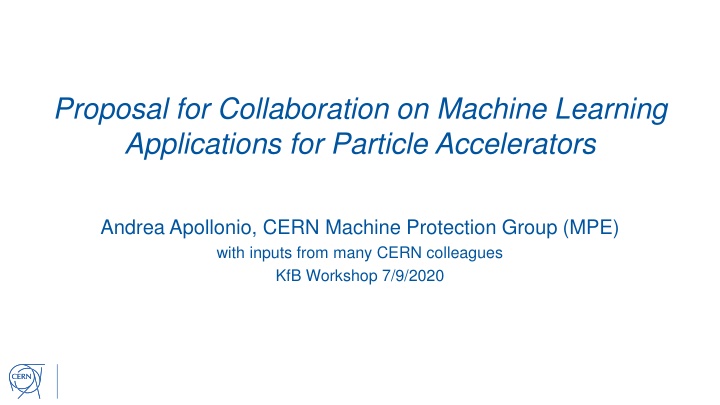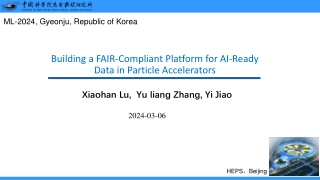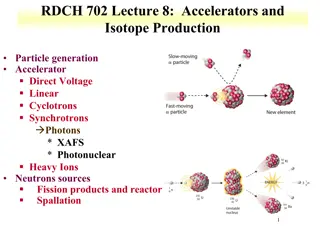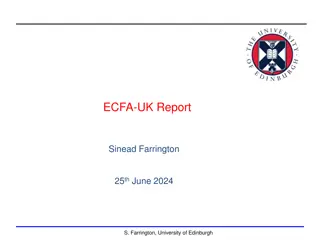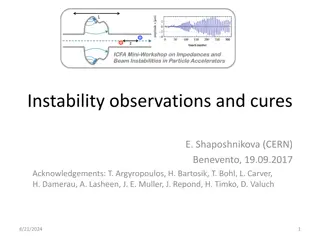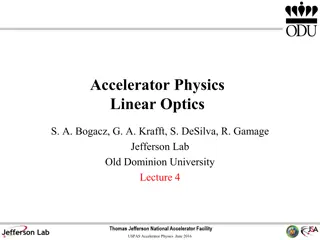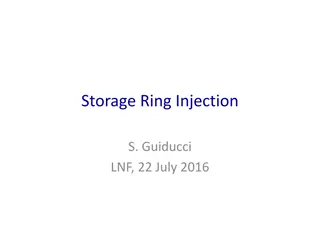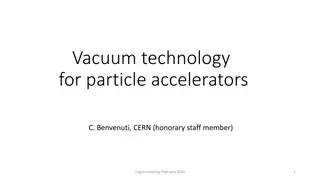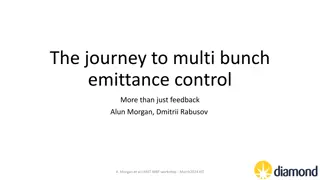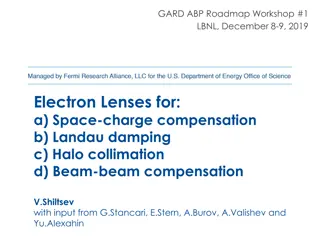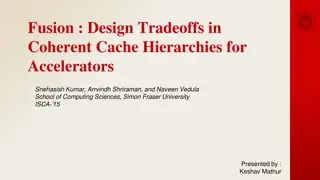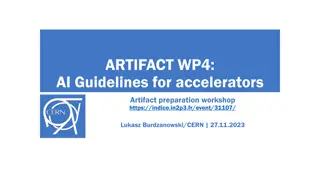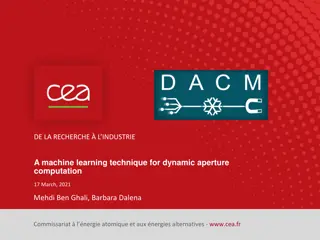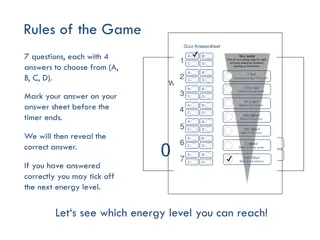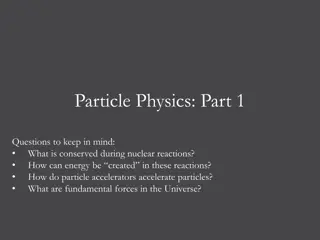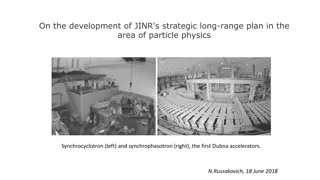Collaborating on Machine Learning for Particle Accelerators
Fostering collaboration between academia and research institutes to leverage machine learning for enhancing particle accelerator operations. Areas of interest include quench detection, failure prediction, root cause analysis, and more. Examples of ML applications in accelerator systems are discussed, highlighting the potential for innovative solutions.
Uploaded on Feb 28, 2025 | 2 Views
Download Presentation

Please find below an Image/Link to download the presentation.
The content on the website is provided AS IS for your information and personal use only. It may not be sold, licensed, or shared on other websites without obtaining consent from the author.If you encounter any issues during the download, it is possible that the publisher has removed the file from their server.
You are allowed to download the files provided on this website for personal or commercial use, subject to the condition that they are used lawfully. All files are the property of their respective owners.
The content on the website is provided AS IS for your information and personal use only. It may not be sold, licensed, or shared on other websites without obtaining consent from the author.
E N D
Presentation Transcript
Proposal for Collaboration on Machine Learning Applications for Particle Accelerators Andrea Apollonio, CERN Machine Protection Group (MPE) with inputs from many CERN colleagues KfB Workshop 7/9/2020
Context The particle accelerator context: Large amounts of data available from accelerator equipment and beam measurements Integrated environment with operators, system experts, hardware systems, software applications, continuously evolving Advanced modelling of physics phenomena (magnet circuit behaviour, beam loss mechanisms, quench behaviour, ) Challenges associated to data analysis and system complexity Today most of the observed issues are coming from unknown/unexpected processes and complex system dependencies (dust particles interacting with proton beam, beam instabilities triggered by external sources, dynamic heat loads in large cryogenic systems, ) Difficult to explore large data sets and find non-trivial correlations without a systematic and automated approach For many systems large data volumes are available but only few cases containing known hardware issues (unbalanced data-sets) Scaling today s experience to next-generation machines will make addressing the above points a priority
Proposal Identify areas of interest within the accelerator/research community (health monitoring and failure prognostics, machine protection, anomaly detection, ) 1. Quench detection and quench protection of SC elements 2. Failure prediction for enhanced predictive maintenance (e.g. Power Supplies, ) 3. Automated root cause analysis for intervention optimization (e.g. SC circuit, ) 4. Automated recovery procedures following equipment failures (e.g. RF breakdowns) Identify areas of interest in academia: 1. Online ML for mission-critical systems 2. Supervised learning for heavily unbalanced datasets 3. Explainable AI 4. Reinforcement learning for parameter space optimization Find synergies and possibilities of collaboration to bring together the best of both worlds: Long-lasting technical experience with operating machines + large data-sets to be explored (research institutes) Machine learning algorithms and computing technologies (universities)
Examples of ML Applications Unsupervised learning for breakdown identification in CLIC accelerating structures (WIP) Supervised learning for failure prediction in CERNs PS Booster power supplies based on analysis of alarm archives Explainable Deep Learning for Fault Prognostics in Complex Systems: A Particle Accelerator Use-Case , L. Felsberger et al., CD-MAKE 2020
